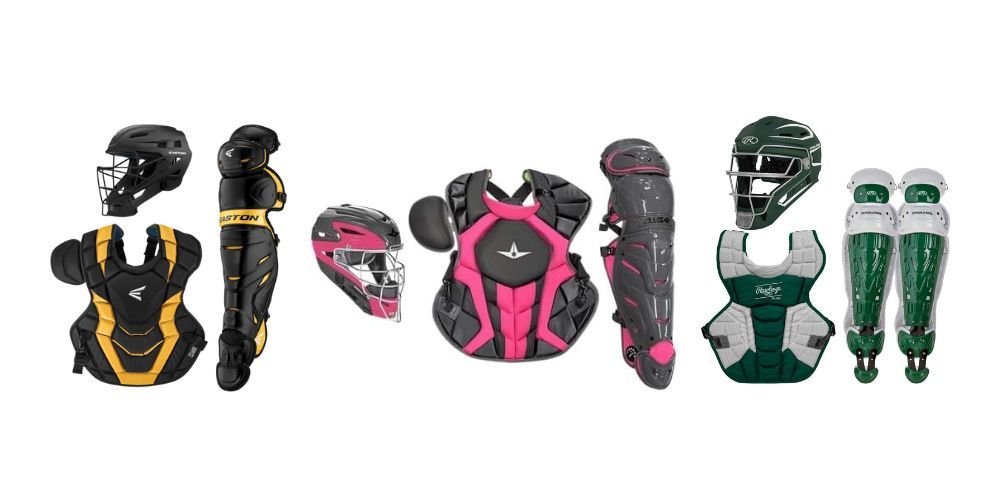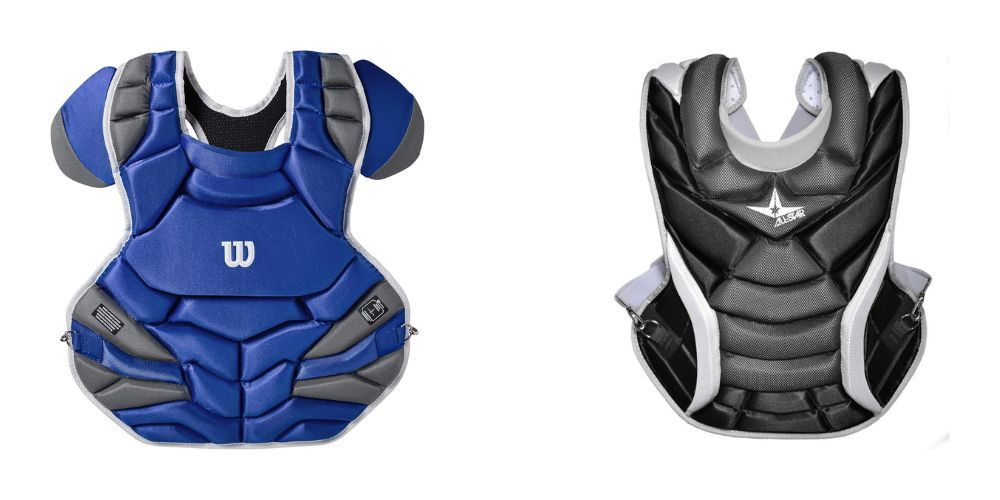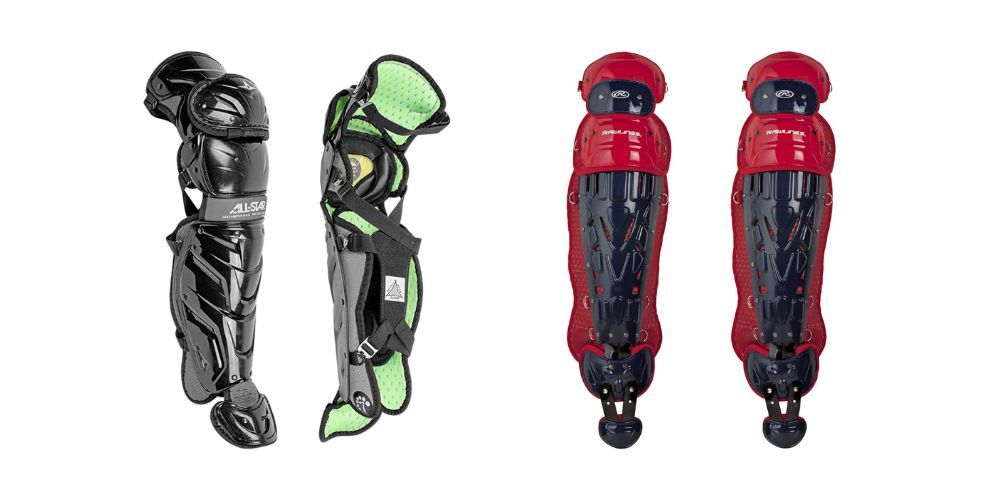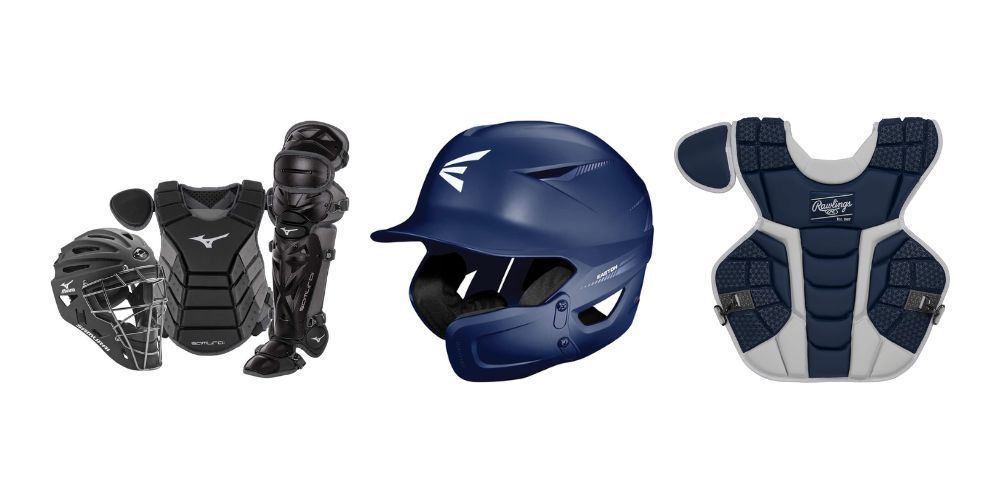Comprehensive Guide to Protective Gear Sets in Softball: Tips and Reviews
September 17, 2024
Playing softball with confidence means trusting that your gear can protect you from injury. Imagine stepping on the field, ready for that fast pitch or hard-hit line drive, but worried whether your equipment can handle the impact. This concern is all too common among both players and coaches, as insufficient protection can turn a fun game into a stressful ordeal.
Our comprehensive guide addresses these worries by providing carefully researched insights. We've scoured expert reviews, consulted with coaches, and gathered authentic user feedback to identify top-performing protective gear sets. Let’s start exploring some of the best options available today to ensure peace of mind as you play at your best.
The Comprehensive Guide to Protective Gear Sets in Softball provides an extensive examination of essential equipment such as helmets, chest protectors, leg guards, and facemasks, detailing their importance for player safety. Additionally, the guide includes information on sizing, product recommendations, and best practices for selecting suitable protective gear tailored to different player positions and skill levels.

Ultimate Protective Gear Sets in Softball
When selecting a protective gear set for softball, it’s essential to consider factors such as comfort, fit, and the level of protection each piece provides. A well-chosen set enhances performance and significantly reduces the risk of injuries on the field. Several manufacturers have become standout names in this space, delivering high-quality gear that meets the demands of players at various levels.
Popular Gear Sets
Let’s explore some ultimate gear sets recommended by both coaches and players:
- Easton Elite X Set: This set includes a helmet, chest protector, leg guards, and elbow protectors. Players often find that its ergonomic design allows for maximum movement without compromising safety. The soft foam padding provides a comfortable feel while ensuring robust protection.
- All-Star System 7 Axis Pro Gear Set: Renowned for its durable materials and superior impact protection, this set is ideal for serious athletes looking for longevity and resilience. Coaches appreciate this kit's thoughtful design, which promotes airflow to keep players cool during intense gameplay.
- Rawlings Velo Series: Known for a perfect balance between a lightweight feel and solid protection, this gear set resonates well with fast-paced players. It offers excellent freedom of movement, making it popular among those who want to stay agile while ensuring their safety.
Each of these gear sets has unique features tailored to different player needs and preferences. The Easton Elite X Set is frequently praised for its comfort and fit, making it a popular choice among high school and college players. Many users report that it sits snugly without being too tight, allowing them to focus completely on their game rather than their equipment.
As we transition from gear sets to individual components, it's important to highlight how certain pieces can affect overall safety and performance on the field. From protective helmets to face masks, understanding these elements will help ensure you’re fully equipped for your next game.
Top Helmet and Face Mask Options
Helmets and face masks are not just accessories; they are crucial for safety on the field. Choosing the right combination can make a significant difference in how well players protect themselves from high-speed pitches and unpredictable impacts. With many options available, selecting the right gear involves understanding personal preferences alongside safety features.
While some players swear by traditional-style masks for their breathability, there's been a noticeable trend toward hockey-style helmets. These helmets often offer additional protection that can be invaluable during critical game moments. Players who switch frequently report that the added security alleviates concerns about head injuries without significantly compromising visibility.
Key Factors in Selection
When choosing a helmet and face mask, several key factors come into play.
Fit and comfort are paramount. For instance, helmets like the Under Armour Converge feature customizable padding that ensures a snug fit regardless of head shape. A comfortable helmet means players can focus on the game instead of constant readjustments or discomfort due to chafing.
Visibility is another essential aspect of selection. The Mizuno Samurai G4 mask has gained popularity for providing an unobstructed view of the field, allowing athletes to react quickly to plays as they develop. Being able to see incoming pitches clearly can make all the difference during high-stakes moments in a game.
Durability should never be overlooked either. Helmets made with high-grade ABS plastic—like the Easton Z5—stand the test of time and frequent use on the diamond. This kind of sturdy construction helps resist wear and tear from frequent impacts, which can lead to structural weaknesses over time if not chosen wisely.
It's also worth noting that according to a survey conducted by the National Softball Association, an impressive 75% of players noted fewer injuries after they made the switch to helmets equipped with full face masks. This statistic underscores just how vital good protective gear is—not just for individual players but for nurturing a safer playing environment across youth leagues and competitive teams alike.
By focusing on these crucial elements—fit, visibility, and durability—you will ensure your defensive game is solidified. Now, let's navigate through some standout options specifically designed to safeguard one vital area of gameplay.

Best Chest Protectors
Chest protectors are essential for safeguarding the chest and abdominal areas from stray balls and fast pitches. Choosing the right one goes beyond just picking a name brand; it's about ensuring a combination of comfort, adaptability, and safety. For example, the Wilson C1K Chest Protector, favored by top athletes like Jenny Finch, provides excellent flexibility and expansive coverage. Its success in high-pressure games stems from these attributes that not only protect but also enable mobility.
When looking for a chest protector, one of the most crucial aspects to consider is padding quality. Effective padding minimizes the risk of injury during play, particularly with high-speed pitches. High-density foam, such as the type used in the All-Star Vela, absorbs impacts efficiently, creating a safer experience for young players who are still developing their skills. This level of protection becomes increasingly vital as pitchers gain speed.
Features to Look For
- Padding Quality: High-quality foam like that found in advanced models reduces the potential for injuries.
- Ventilation: An often-overlooked feature is adequate ventilation; breathable mesh panels help dissipate heat and moisture, reducing sweat buildup that could distract or discomfort players mid-game.
- Adjustability: A snug fit is paramount. Protectors equipped with adjustable straps ensure the gear stays securely in place—limiting unnecessary movement. This reliability allows a catcher to focus entirely on gameplay without worrying about their gear shifting or loosening during play.
It's also important to think about how easy it is to clean and maintain chest protectors because hygiene plays a critical role in player health. After every game, be sure to wipe down any removable padding with a damp cloth and air-dry it properly to avoid odors or bacteria. Regular cleaning will keep your gear in prime condition throughout the season.
While protecting the upper body is crucial, safeguarding knees and shins comes next, particularly for catchers who face unique challenges during intense games.

Knee and Shin Guards for Safety
Knee and shin guards are often underrated pieces of equipment, yet they play a critical role in a player's safety while navigating the dynamics of the softball field. These guards provide essential shielding against injuries resulting from slides, sudden stops, or even collisions with other players. Every time a player slides into home plate or dives for a catch, having reliable knee and shin protection can mean the difference between a successful play and an injury that sidelines them for weeks.
When selecting knee and shin guards, material is one of the most important factors to consider. High-quality guards made from molded polyethylene offer outstanding robustness while still keeping the weight manageable. This material is tough enough to withstand impacts yet flexible enough to accommodate natural body movements. Therefore, investing in guards made from such durable materials can ensure long-lasting performance on the field.
Beyond just strength, mobility is another key element.
The design of the guard significantly affects how well it can protect you without hindering movement. Hinged designs, similar to those found in the Rawlings Velo Series, allow for a greater range of motion, which is especially beneficial during dynamic plays. You want gear that won’t hold you back—after all, you need to turn on a dime or sprint after a foul ball without any restrictions.
For instance, during a game where quick reaction times are crucial, I once witnessed a player equipped with traditional rigid guards struggle to respond promptly when an errant throw came their way. Conversely, players wearing hinging guards were quickly able to dive and make plays safely, demonstrating the importance of this design feature.
Additionally, cushioning inside your knee and shin guards deserves thoughtful consideration as well.
Adequate cushioning enhances comfort and helps prevent injuries over time. Many modern guards come with options to attach additional knee savers. These offer extra padding during critical moments in extended matches where fatigue sets in—definitely a plus for athletes who are on the field for prolonged periods. Maintaining comfort can lead to better focus and performance throughout the game.
| Criteria | Description |
|---|---|
| Material | Opt for molded polyethylene for durability |
| Mobility | Select hinged designs for enhanced motion |
| Cushioning | Attach knee savers for added comfort during extended play |
While knee and shin guards might seem like mere accessories, they are vital components that protect against potential injuries while enhancing performance on the field. Choosing wisely based on material quality, design flexibility, and cushioning can keep players safe and allow them to engage fully in the game without fear of injury.
With knees and shins covered, let’s look closely at smaller yet essential protective gear that deserves equal attention.
Essential Wrist and Neck Guards
Wrist and neck guards might seem minor, but they play critical roles in preventing serious injuries. For players actively swinging bats or sliding into bases, the risk of injury to these areas is high yet often underestimated. Choosing effective wrist and neck protection is paramount for comfort and reducing the chance of severe injury.
Importance of Wrist Guards
Wrist guards provide protection from abrupt ball impacts and sliding abrasions that can lead to sprains or fractures. One excellent choice on the market is the EvoShield Wrist Guard, which stands out due to its customizable shield molding that forms perfectly to the shape of your wrist. This feature ensures a snug fit, allowing for more natural wrist movement while still providing solid protection.
In my experience purchasing wrist guards, ensuring a perfect fit makes all the difference—too loose and they lose effectiveness; too tight and it restricts movement, which can hinder performance.
Necessity of Neck Guards
Neck guards are often overlooked but serve a vital purpose. They provide crucial protection for the throat and neck area during play, particularly when a player is at bat or in a compromised position during sliding events. The Champro Throat Guard, for instance, is widely favored among players due to its lightweight design that doesn’t impede performance while still offering sturdy protection.
Think of neck guards like seat belts in your car; at first glance, it seems unnecessary until you realize their potential importance in an unexpected situation.
Notably, studies indicate that 30% of softball injuries occur in the wrist and neck areas without protective gear, but this number drops significantly when players utilize appropriate guards. This reinforces that investing in proper protective equipment is not merely about compliance; it's about ensuring safety and preserving one's ability to play.
As we shift our focus to additional aspects of protective gear sets, examining how different types of equipment cater specifically to various positions will offer valuable insights into enhancing both safety and performance on the field.
Choosing the Right Gear by Position
Different positions in softball necessitate various types of protective gear. Each player's role influences not only the style of play but also the specific gear that will ensure their effectiveness while maintaining optimal safety. As you consider your position, it's crucial to prioritize both protection and comfort, enabling you to perform at your best.
Infielders vs. Outfielders
When it comes to infielders and outfielders, the differences in gear requirements become immediately apparent. Infielders, positioned closer to the batter, contend with harder and faster hits. Consequently, they benefit from sturdier chest protectors and thicker shin guards. These provide necessary defense against sharp line drives and ground balls without sacrificing mobility too drastically.
On the other hand, outfielders thrive on flexibility and speed since they often chase down fly balls across vast areas of grass. Therefore, their gear should be lighter and less bulky. A streamlined chest protector allows maximum freedom of movement while still offering enough cushioning for impact protection. Their gloves can also be modified for a larger pocket size to help with catching those high-flying balls.
Catchers
The catcher is undoubtedly the most heavily equipped position on the team. A complete set for catchers encompasses a durable helmet complete with a faceguard, a well-padded chest protector, leg guards that shield the shins and knees during pitches, as well as wrist guards and knee savers to minimize injury risk during squatting or in chaotic plays at home plate.
When selecting catcher's gear, one must consider fit; too tight could hinder movement while too loose may not provide adequate protection during gameplay. Investing in quality materials ensures longevity, as catcher's gear endures significant wear through repeated innings behind the plate.
Pitchers
For pitchers, gear choice is a delicate balance between lightweight construction and protective measures. They require gear that allows maximum flexibility while ensuring they’re shielded from high-speed line drives. A good option here is a fitted cap with an integrated face mask, providing protection without obstructing vision or throwing motion.
Additionally, pitchers often rely on tailored gloves that allow for easy grip and release of the ball while having sufficient padding to protect against errant throws that might hit their hands or fingers during practice or in-game situations. Flexibility should always be prioritized—look for mesh materials that stretch comfortably around their wrists without impeding motion.
Comfort plays an immense role in the choice of gear, leading us into an examination of highly rated options that excel in both soothing support and crucial safety features.
Top-Rated Gear for Comfort and Safety
The best protective gear won't just shield players from injury; it will also enhance their comfort during long hours of play. A well-fitting piece of equipment can feel like a part of your body rather than a cumbersome accessory. Understanding which products meet these crucial requirements is beneficial for players at every level.

Highlights of Comfort-Driven Gear
- Mizuno Samurai Catcher’s Set: Lauded for its snug fit and breathability, this set helps catchers maintain focus without feeling weighed down. Players often report a remarkable blend of flexibility and security, making it perfect for quick movements.
- Easton Pro Max Helmet: Lightweight and padded, this helmet is designed with comfort in mind. Many players appreciate how it doesn’t cause neck strain, allowing them to stay engaged in the game longer without discomfort.
- Rawlings Mach Chest Protector: Equipped with flex technology, this protector moves with the player’s body instead of against it. This responsiveness enhances protection and ensures that athletic movements are unimpeded.
These examples underscore the importance of choosing gear that supports both comfort and safety, leading to more effective gameplay.
User Reviews
From my experience coaching various teams, I can't stress enough how pivotal comfort is. One product that consistently receives praise is the Easton Ghost Series. Many players love how it blends superior protection with unmatched comfort. Its design has become a favored option among teams seeking to elevate their performance without sacrificing safety.
| Brand | Gear Type | Comfort Rating | Safety Rating |
|---|---|---|---|
| Mizuno | Catcher's Set | 9/10 | 9/10 |
| Easton | Helmet | 9/10 | 8/10 |
| Rawlings | Chest Protector | 8/10 | 9/10 |
When selecting gear, it's imperative to weigh each piece based on its comfort and safety ratings meticulously. Balancing these factors can dramatically influence a player's performance on the field by allowing them to focus entirely on the game rather than any annoying gear issues.
Investing in well-crafted protective gear not only enhances individual performances but also contributes to building a cohesive unit where players are mentally and physically prepared for competition. Prioritizing comfort and safety ensures that everyone can give their best on the field.
What protective gear is essential for playing softball?
In softball, key protective gear includes a helmet, face mask, chest protector, leg guards, and gloves. The helmet and face mask protect players from fast-moving pitches and wild throws. The chest protector and leg guards safeguard vital areas, especially for catchers, while gloves are necessary to prevent hand injuries. While some players, such as pitchers and infielders, may not wear as much gear, catchers and younger players should wear comprehensive protective equipment to stay safe during games.
How do I choose the right size of protective gear for softball?
Choosing the right size of softball protective gear is crucial for comfort and safety. Helmets should fit snugly without being too tight, covering the head fully. Chest protectors should extend from the neck to the waist, allowing for easy movement while providing solid protection. Leg guards should cover from the knees to the ankles and offer flexibility. Always check the manufacturer’s sizing chart, and if possible, try on different options to ensure a proper fit. It’s essential to have gear that stays secure without restricting movement.
How often should I replace my softball protective gear?
The lifespan of softball protective gear varies depending on how often you play and how well you maintain it. Helmets should be replaced if they show cracks, dents, or after any significant impact, even if there’s no visible damage. Chest protectors and leg guards can last several seasons but should be replaced if they no longer fit properly, the padding wears out, or the straps break. Regular cleaning and inspection can extend the life of your gear, but safety should always come first, so replace any equipment that’s showing signs of wear and tear.
Check out the latest guides on softball gear
Author: William Flaiz










